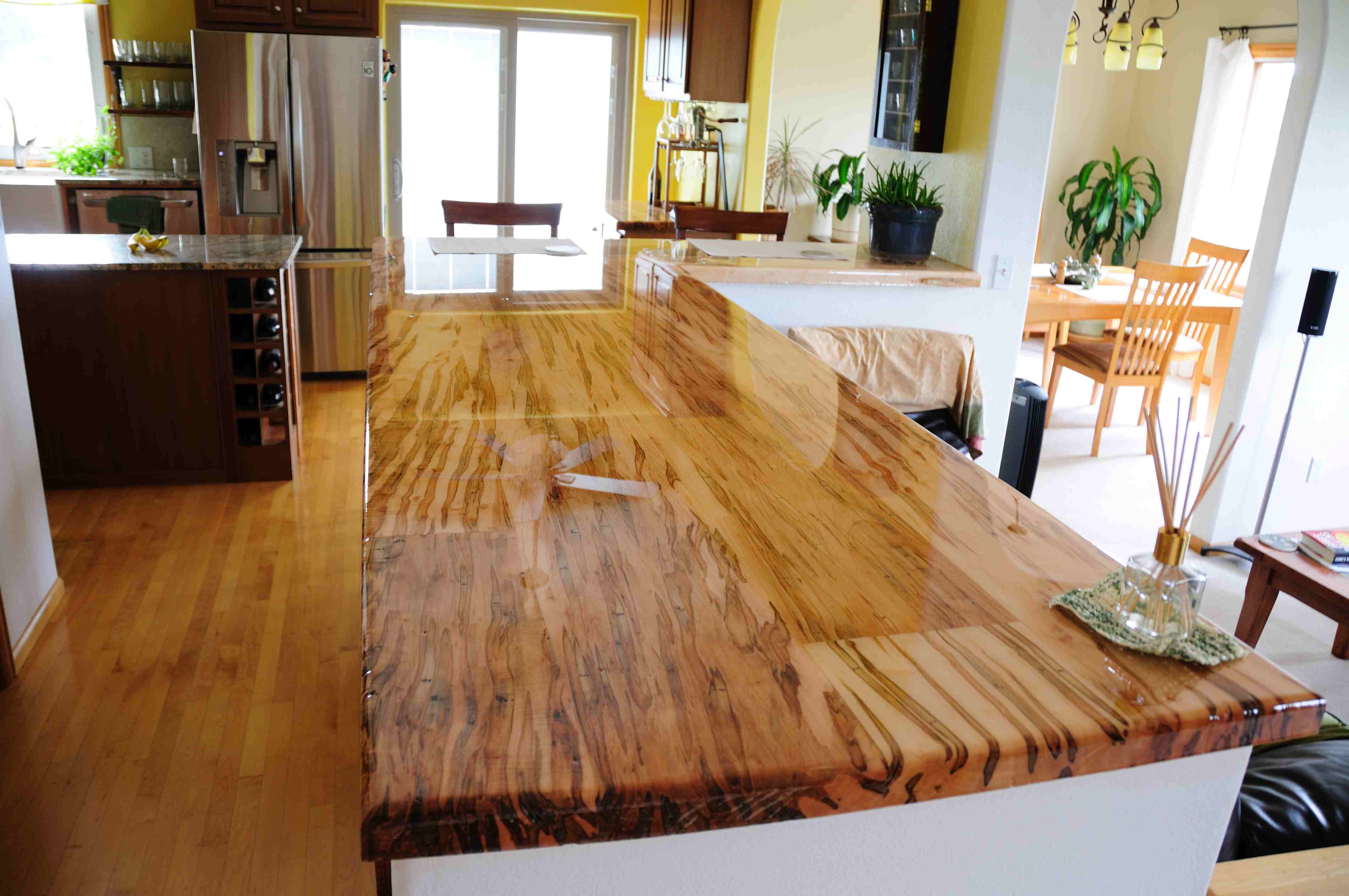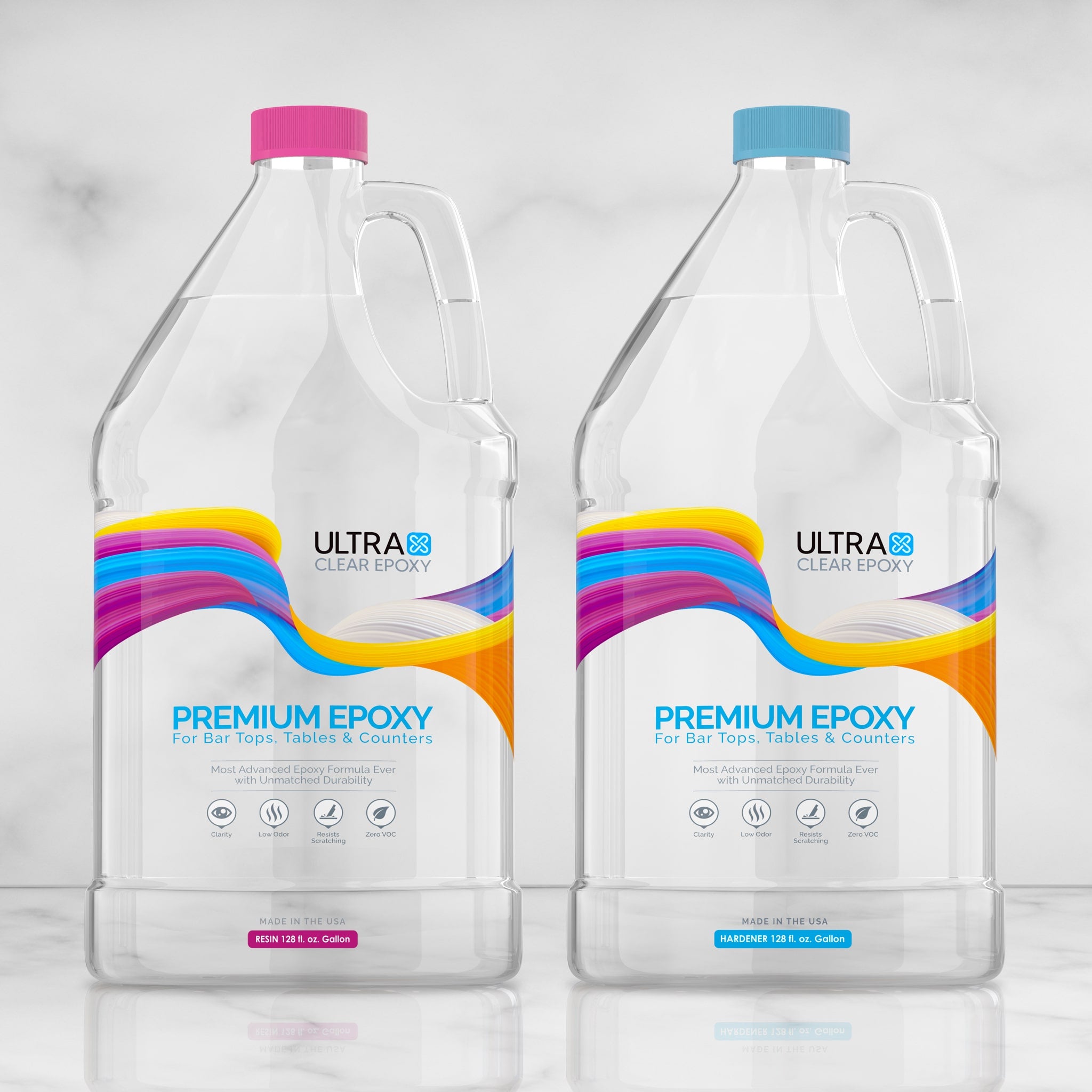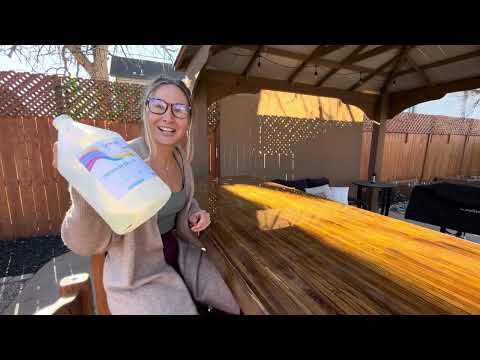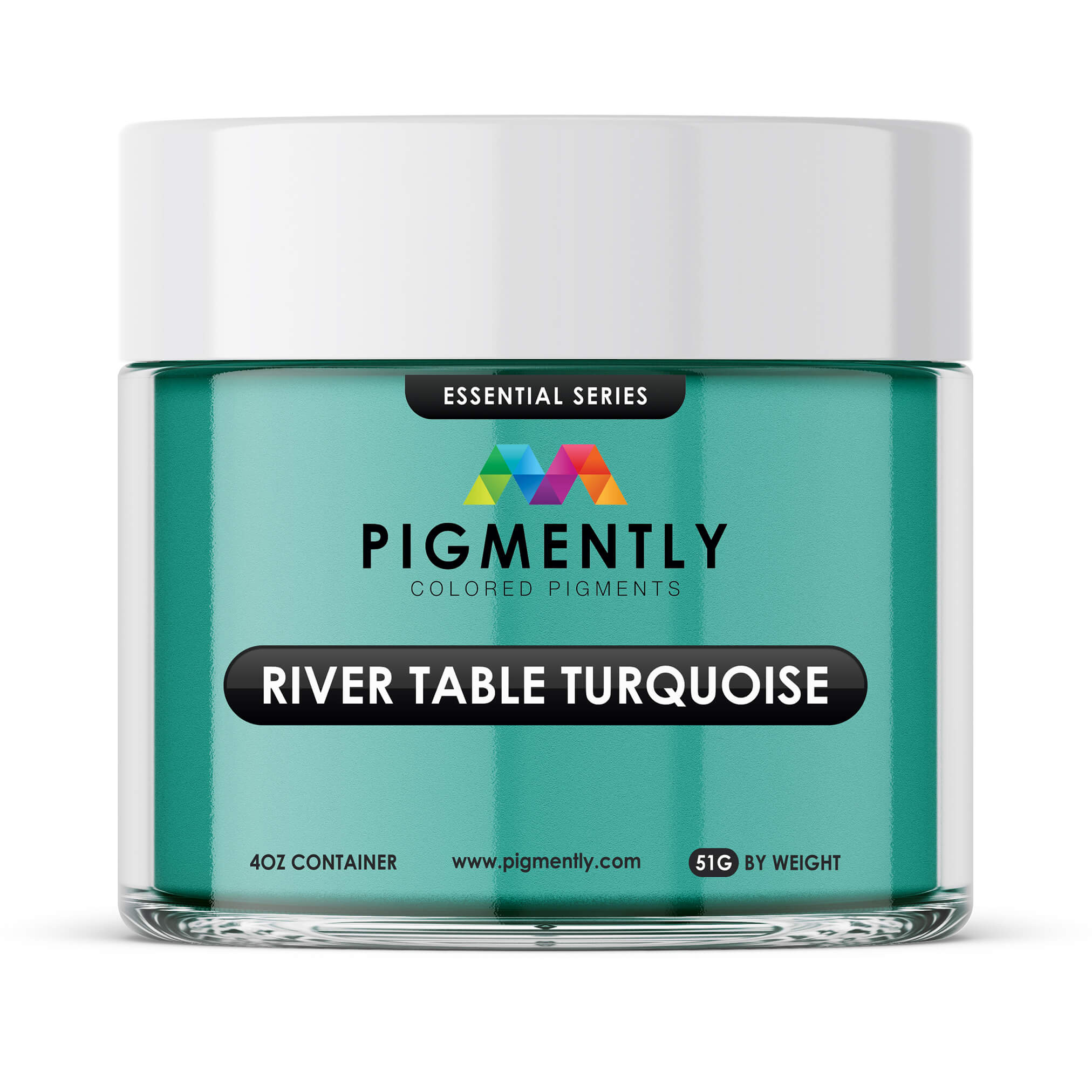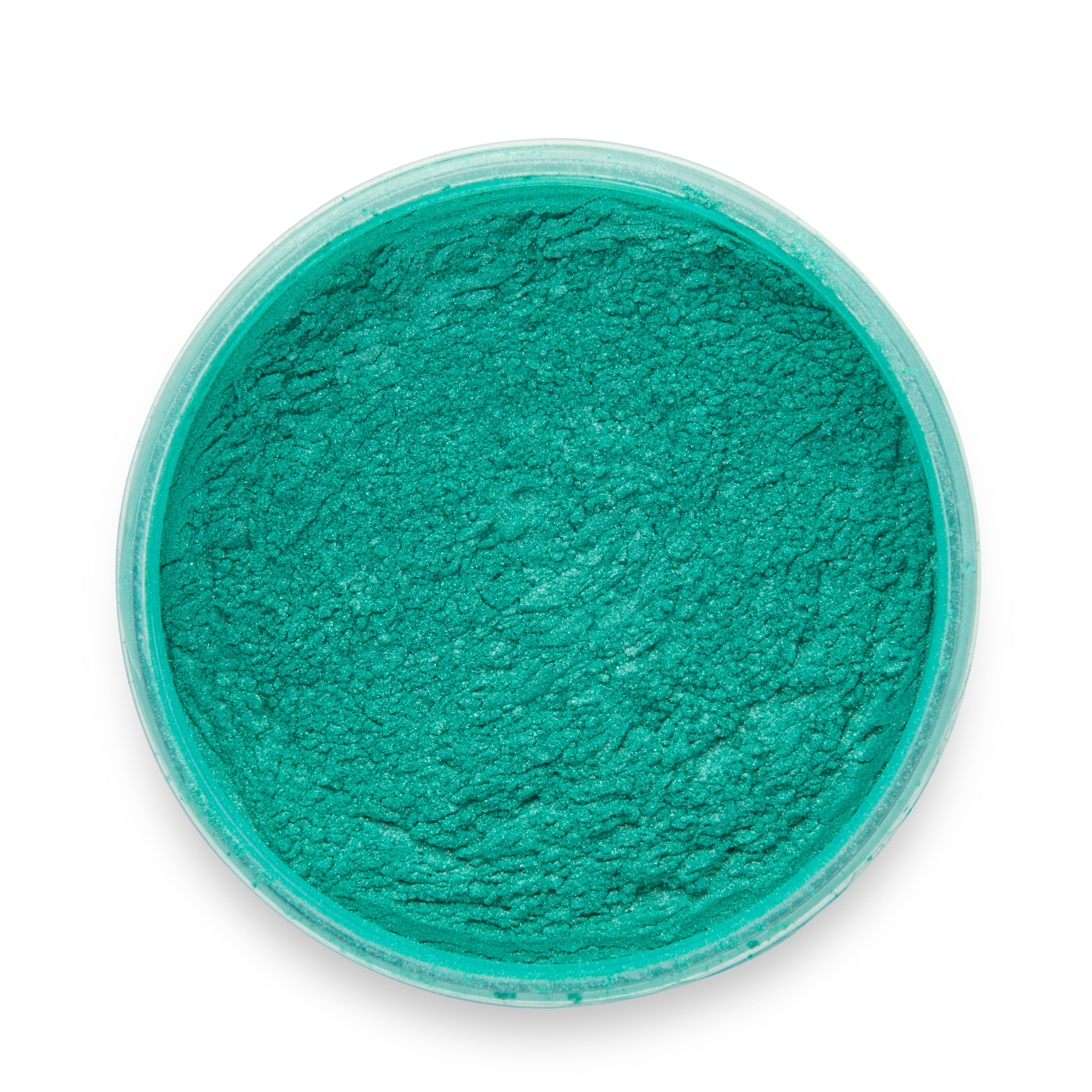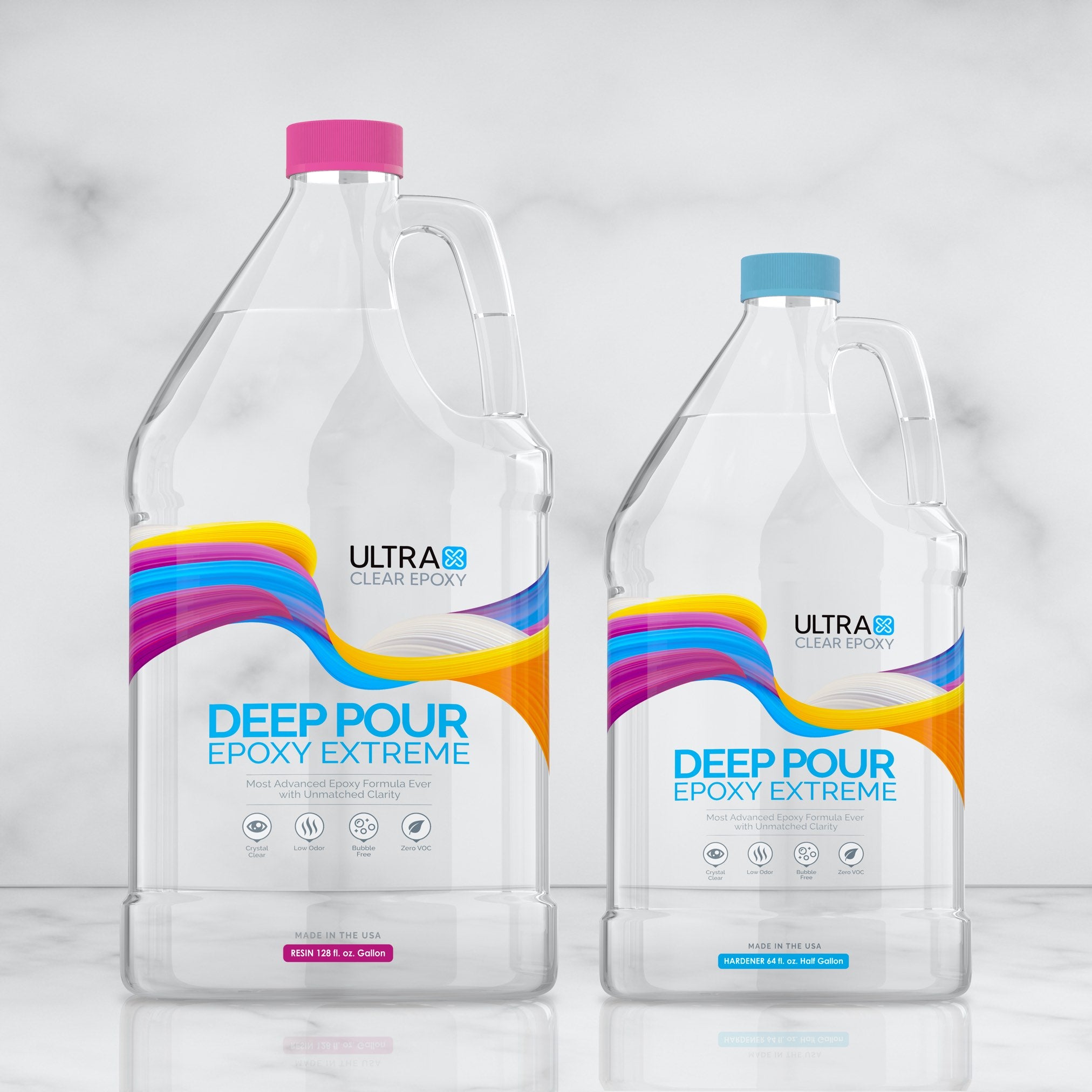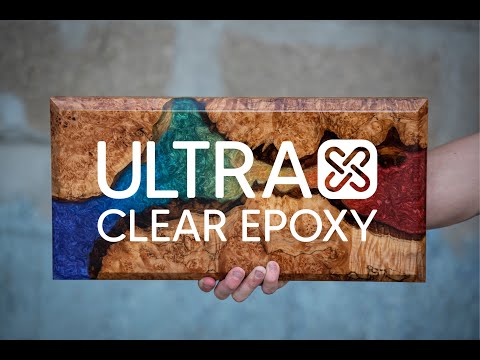Epoxy resin is a remarkable material that can be used as a finish for a wide variety of beautiful materials.
For constructing furniture or art using epoxy resin, wood is considered the go-to choice to serve as a bonding surface, also called a substrate.
Wood is available in numerous varieties, many of which are considered attractive, but most of which have a few particular weaknesses.
Below, we explain how epoxy helps compensate for wood's natural flaws while preserving its strengths and enhancing its beauty.
Wood makes an excellent substrate for epoxy resin
Most epoxy is stored as two separate components: a resin and a hardener. Whenever these components are mixed together and poured onto a surface, a chemical reactions occurs in which the epoxy attempts to bond with that surface, slowly hardening through a process known as curing.
Epoxy adheres best to dry surfaces that are porous or textured, such as wood. When mixed epoxy resin is added to a porous surface—in most cases starting with a seal coat—it seeps into these tiny holes and slowly cures.
Though these porous surfaces sometimes require a little more attention and care during the crafting process, the end result is a sleek, seamless epoxy coating that makes the added effort all worthwhile.

Epoxy resin is great for filling holes and grooves in wood
Some types of wood are considered particularly stunning. Their natural forms are often desired for their aesthetic qualities; in lumber form, wood like this tends to have knots and other peculiarities that contribute to a unique appearance.
The downside is that these characteristics tend to give it an uneven shape and can be a structural liability without support. Fortunately, epoxy can resolve these issues and make such wood safely usable for heavy furniture and other creations.
Coating wood with a layer of epoxy allows you to fill in any voids it has while also smoothing out the roughness of its surface area.
Small spaces can be covered with typical table top epoxy, while for larger spaces you can use deep pour epoxy to fill them in neatly. Deep pour epoxy can even be used between large, irregular chunks of wood. This premise is how river tables are constructed.
Epoxy resin enables attractive yet weaker types of wood to be used in projects such as epoxy countertops, table tops, benches, etc., with the goal being to display the wood's inherent beauty while also being sturdy and functional.
Epoxy is very protective of wood surfaces
Although high-quality wood that has been processed can be treated in different ways (e.g., with lacquer) to give it some level of protection, with most of these the wood will still be vulnerable to water damage, scratching, or even damage from accidental impacts such as dropping something heavy on it.
Applying epoxy to the wood provides a higher level of protection than other options, while still showcasing its appearance.
Some of the benefits epoxy brings to wood:
-
High resistance to impacts and scratching - Good quality epoxy has a very high hardness rating.
For polymers like epoxy, this hardness is tested using the Shore hardness scale with a Type-D durometer. The durometer is a device which applies greater and greater force until the material being tested exhibits denting or similar forms of damage.
Our own UltraClear Table Top Epoxy received an extremely high 98 out of 100 rating on this scale. -
Liquid and moisture protection - It's no surprise that wood can be damaged by water; the porous, organic nature of the material is quite absorbent. Over time, water softens it and can introduce decay and rot.
Coating dry, clean wood with epoxy will safeguard it from this moisture damage, as epoxy is linearly smooth and prevents liquids and vapor from permeating its surface. - Stain resistant and easy to clean - After hardening, epoxy becomes very stain resistant. Spills and residues are easy to remove from the smooth surface even with basic, gentle cleaning supplies.
Imported epoxy is poorly regulated. Learn how to avoid subpar resins.
When manufactured with proper care, epoxy resin should produce a strong, clear finish for the user who received the product, yet many brands don't live up to these standards.
The sad truth is that many dealers and manufacturers offer low-quality products that cut corners on quality and safety, while also delivering false advertising on what their product can handle.
Our free ebook, The Ugly Truth About Epoxy Resin: What Companies Don't Want You to Know, examines these deceitful practices and explains what you should look for and be wary of when shopping for epoxy resin.

Epoxy embellishes the natural beauty of wood
There are two common types of epoxy resins used to coat wooden furniture: table top epoxy and deep pour epoxy.
Both of these epoxies are clear epoxy resins, meaning after their components are mixed and have finished curing—and provided that they were handled properly per their instructions—they will feature a transparent, glasslike finish; anything directly behind or beneath them will still be visible, unobscured.
This is perfect for attractive materials like wood.
Additionally, epoxy also enhances the look of such materials. Colors will appear less faded and more vivid, and the epoxy itself can optionally have its inherent glossy finish sanded to a matte finish to suit the owner's preference.
Choose a premium epoxy for beautiful, long-lasting results
At UltraClear Epoxy, each of our resins are premium-grade. This means that they'll last a long time, with fewer maintenance costs than most other brands.
They also cure to a glasslike finish, have a long shelf life, and won't yellow indoors.
You can find our premium epoxy resins on the following pages:
- UltraClear Table Top Epoxy - This is our strongest resin finish. It's perfect for epoxy table tops, countertops, and bar tops, along with many similar project types and even many types of resin art.
- UltraClear Deep Pour Epoxy - This is our deep pour casting resin. You can use this to pour thick epoxy layers (up to 2 inches!) at a time. It's ideal for making river tables, filling silicone casting molds, crafting resin jewelry, and much more.
Additional Resources
Here are some other resources you may find useful:
- Mica powder for resin: Where to get it and what it's for - Did you know you can use special colorants to infuse epoxy resin with different types of color? Read this article to learn more.
- How to wash away resin and epoxy on your hands and skin - Safety is important to us. Learn how to wash away resin from your skin with these methods. It's easier than you might think!
Have questions? Want advice? Contact us!
Here at UltraClear Epoxy, we strive to provide the best possible customer service.
If you have any questions or concerns about epoxy resin or related topics, or if you'd like help with planning an epoxy project, please reach out to us.
You can contact us via phone or email here.
During business hours, you can also text chat on our website with one of our experts directly by clicking the Help button at the bottom right of your screen.

